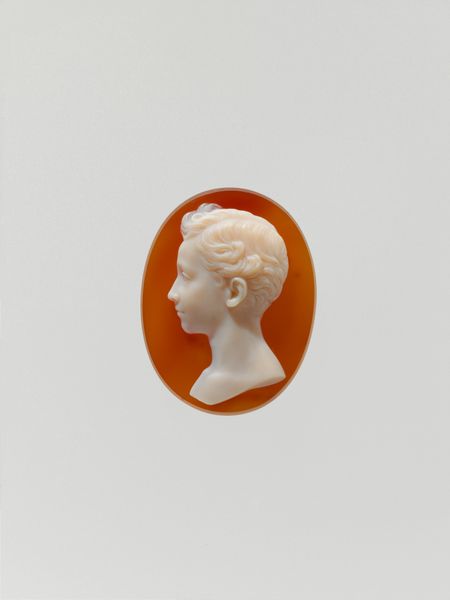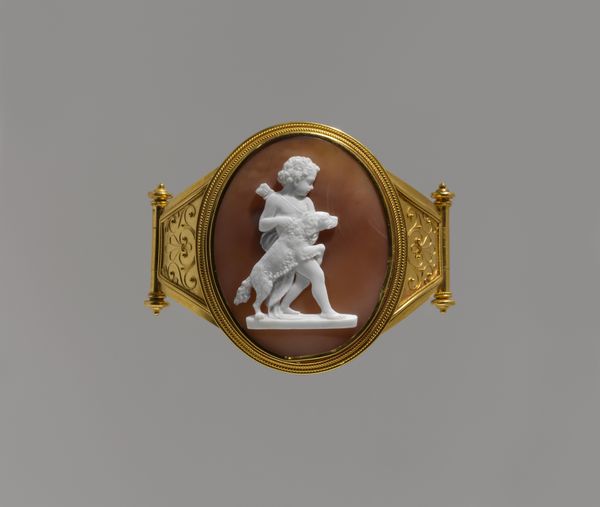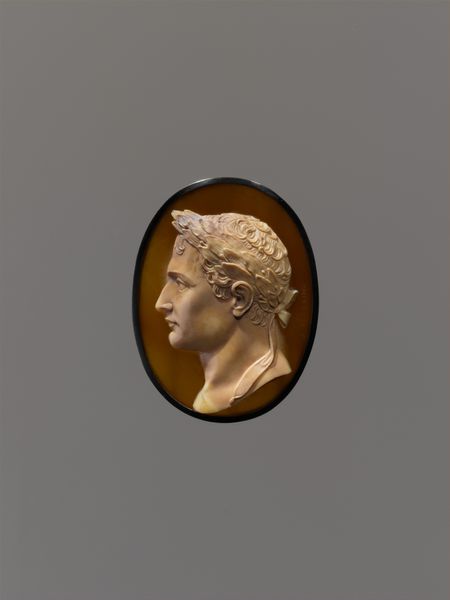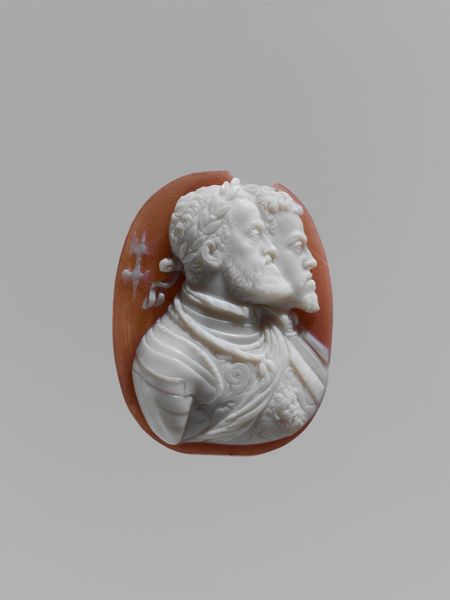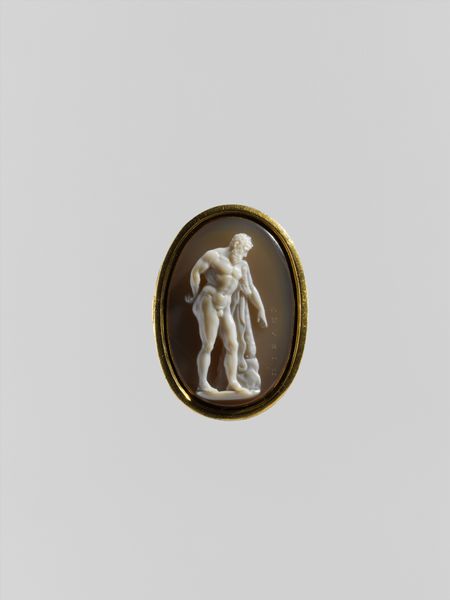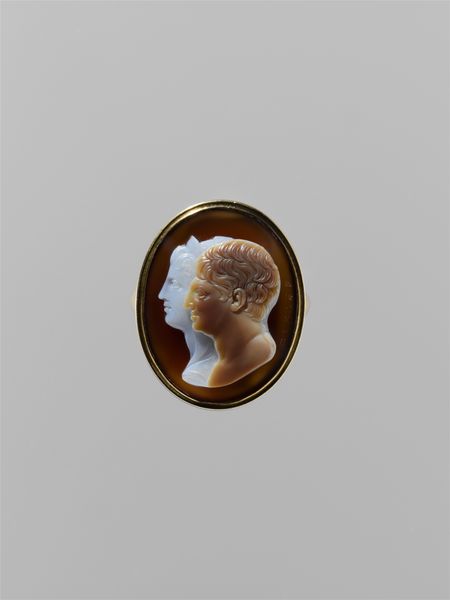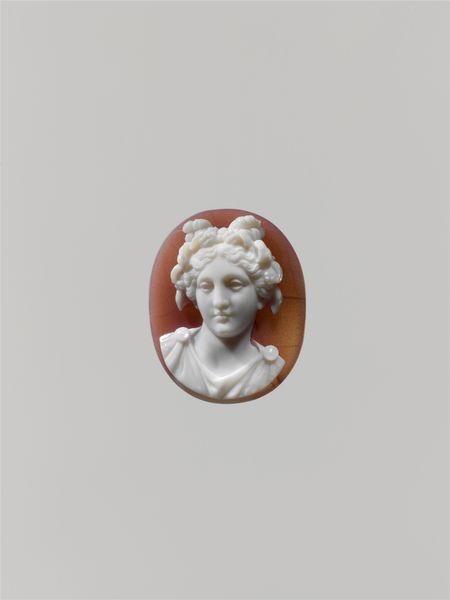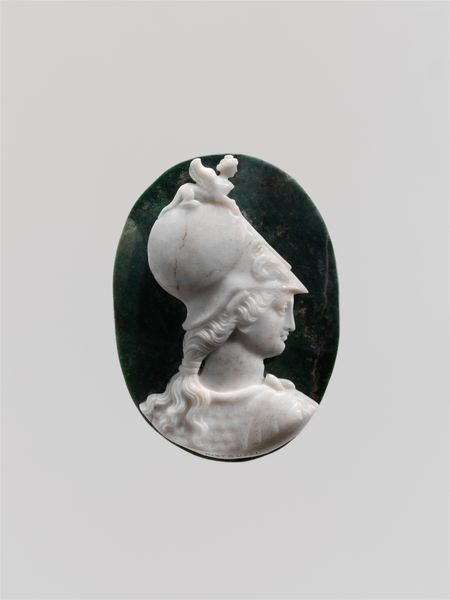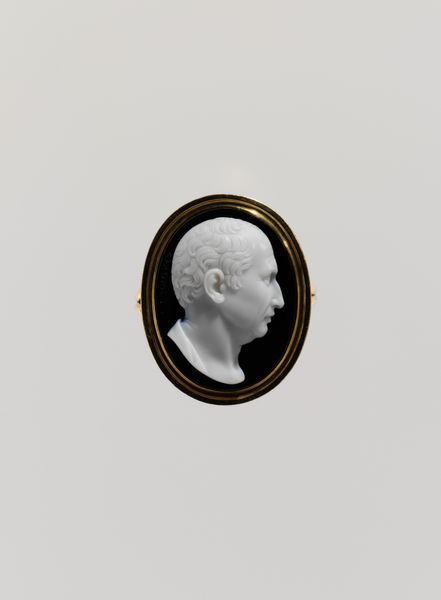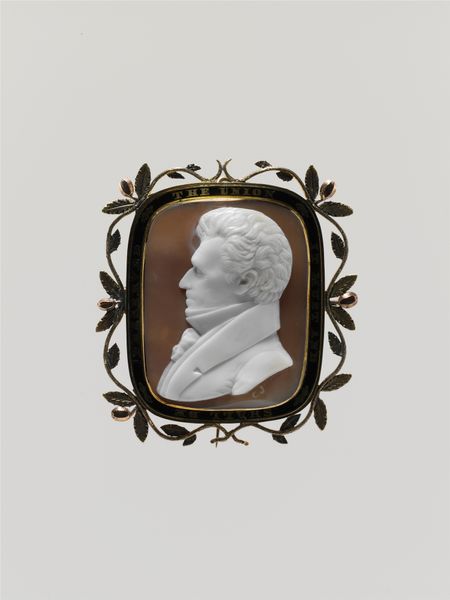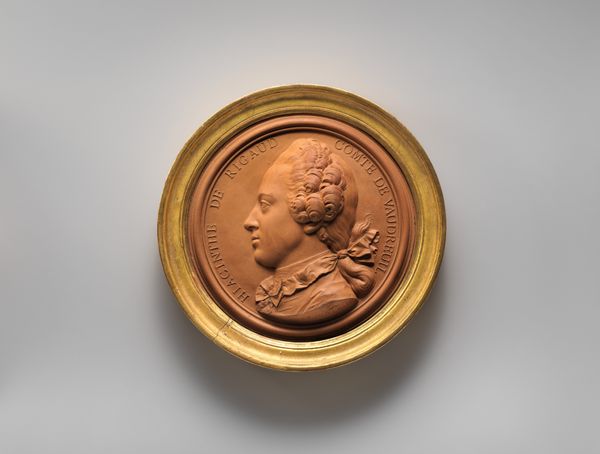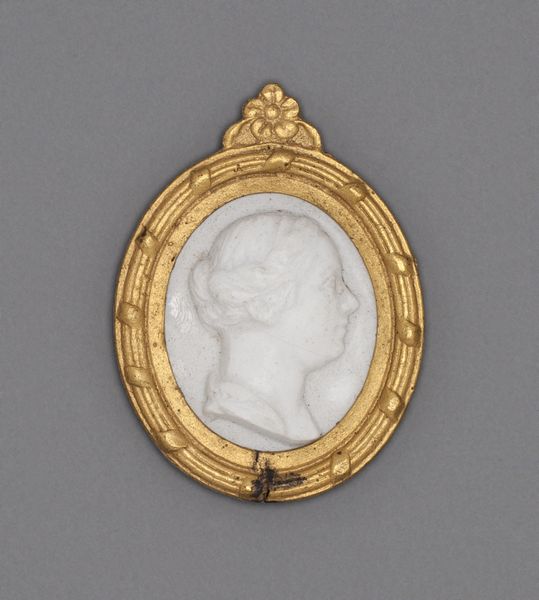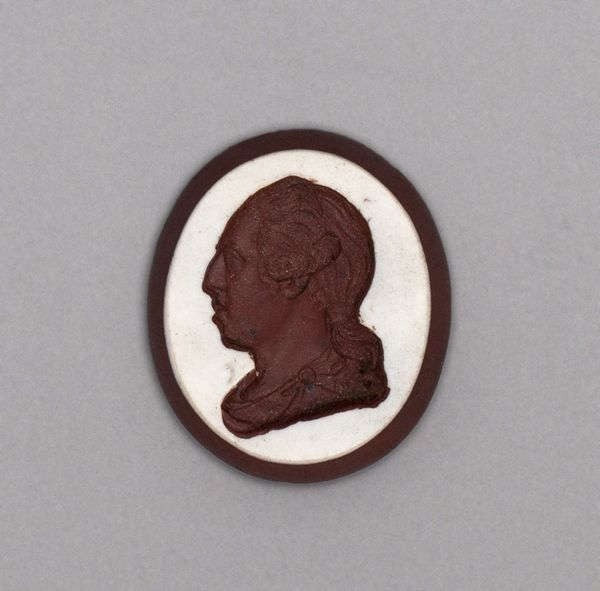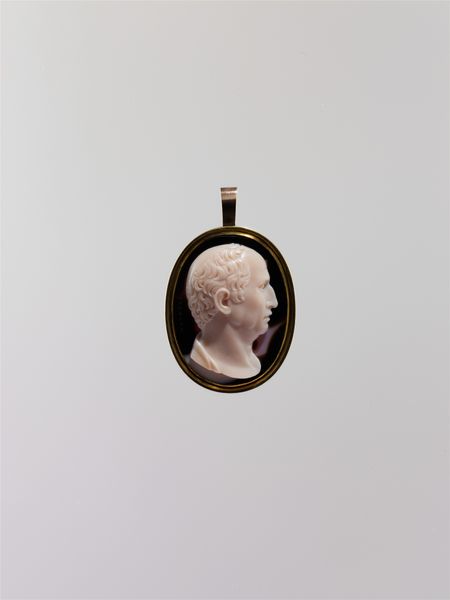
Florence Nightingale (1820–1910), Nurse and Reformer 1850 - 1865
0:00
0:00
sculpture
#
portrait
#
neoclacissism
#
sculpture
#
decorative-art
#
profile
Dimensions: Overall (confirmed): 1 x 3/4 x 3/8 in. (2.5 x 1.9 x 0.9 cm); 25.5 x 19.5 x 9.3 mm
Copyright: Public Domain
Curator: This beautiful cameo portrait, created between 1850 and 1865 by Luigi Saulini, depicts Florence Nightingale. It is housed right here at the Metropolitan Museum of Art. My first impression is how delicate it is. Editor: The stark white figure against that warm red-brown background really makes it pop, almost like it’s illuminated. The Neoclassical style emphasizes its clean, classical lines, while the agate grounds its elegance within a more earthy, handmade tradition. It feels surprisingly intimate. Curator: Nightingale's relentless commitment to reforming medical care for all underscores the importance of this artistic movement’s visual rhetoric in celebrating and perpetuating cultural ideals and promoting images of accomplished women. Cameos like this would have circulated widely among the elite classes of Europe, acting as emblems of enlightenment values. The gendered lens is particularly fascinating here because women have historically been rendered as passive muses, but Nightingale epitomizes female empowerment through social action. Editor: Absolutely, and think about the labor involved! The painstaking carving, the precious material itself...this object is a product of both artistic skill and material wealth. The agate itself is telling; a luxury material carved and polished to showcase not only technical skill but the social status tied to ownership. This sort of object straddles art and craft. Curator: Precisely, and considering Nightingale’s impact on gender dynamics within the medical field, this image represents the material reality of gender roles in 19th century social spheres. It highlights the intersection of power, class, and visual representation, revealing how society uses artistic renderings to define its figures. It brings an intense narrative to the material presentation and offers valuable social insights. Editor: It certainly encourages us to ponder the confluence of artistic intention and broader social significance. Thanks for pointing out its deeper context, I think this helps us connect it more concretely with social actions that define the image in this object. Curator: And considering the materiality, you’ve highlighted the role art plays in materialising our perceptions. A compelling object indeed.
Comments
No comments
Be the first to comment and join the conversation on the ultimate creative platform.
